Blacklight color
Painting with UV colors with fluorescent effect
In this article I describe an unusual way of painting, fluorescence painting. This painting technique is particularly close to my heart. Among the many images of interiors, I particularly remember those images that are oriented towards the effects of UV paint. Today, like yesterday, I remember the parts of the pictures that light up and spill their effect throughout the room, and I keep asking myself about the fantastic space that lies within them.
I remember the exciting and mysterious light dynamics of my fluorescent paintings. Making large plans of the paintings, I move in a dark space, considering the changes that the color will cause in the picture. In the darkened interior, in the illusion of the picture, the scenario seems real and the motifs on the walls look like real / spatial objects. And that is a wonderful experience, an experience that will be remembered for a long time, participating in a dreamed reality, fossilized on the wall surface. Settled on the wall of mental creations that don’t go away after waking up, that stay and are long-lived.
So, what mysterious thing happened to me at the construction site?
The technique of wall painting is far removed from the many panel paintings of easel painting you are familiar with. The reduction in the size of the canvas forces the painter to exercise great discipline. Before starting work, he should determine the motif to be painted. He respects the strict form of the limited surface, carefully considering the composition of the image.
I don’t bother with it while painting on large walls. I can still imperceptibly expand the field of the picture by several meters and additionally build up more fragments on the wall. To enrich the painted walls, I also built spatial sculptures into the pictures. White or colorfully illuminated bright spots made a great impression. The UV color perfectly complements this effect.
Fluorescence painting, the first contact.
Upon entering a disco, I laughed inwardly at first sight of the mural and found it difficult to suppress ironic remarks. I internally rejected the exaggerated coloring. The images appeared more like a child’s scrawl than the work of an adult artist. During the first tour of the premises, I listened to the owner and concentrated on his wishes. He turned on the light. The bluish fluorescent light (“black light”) illuminated the previously invisible parts of the picture on the walls. The pictures were painted in a color I didn’t know and compared to the first impression they shone on the walls in a different way. A source of confusion, I suddenly spoke words of admiration to pretend to have expected these hidden phantom images. Oh yes, you never know what an artist has hidden in a painting. The head of the disco gave me an understanding look. I was glad I hadn’t been effusively derogatory and refrained from further comment. I was supposed to repaint the wall – and he was interested in more fluorescent paintings. And the whole disco is lit with black light.
Dolphins playing on the walls unexpectedly appeared on the surface of the sea, in the rays of light. Suddenly the picture seemed great. I haven’t seen anything similar yet. Fluorescent colors under UV light gave the painted motifs luminous depth. Neon paintings, holograms, fluorescent images. “Yes, of course, interesting paintings,” I said. I am happy to be able to take on this task. Two rooms should be painted with UV paint, and others should be supplemented with small, luminous elements.
Practice creates masters
The beginning of painting turned out to be extremely difficult. After painting most of the walls, it was time for the wondrous glow paint. These colors were strange. You couldn’t paint them with a brush. They spread like gum paste and didn’t want to shine on the walls. It didn’t seem to work. I panicked! I painted a fragment of a fish with a brush. The black light formed the dorsal fin unevenly, making it appear deformed and now more reminiscent of irregularly spotted frogs than the curved shape of a fish back. I was desperately looking for help. Oops, it finally worked and I found the right remedy at the right time. I found help in the airbrush – breathe a sigh of relief! The paint can be sprayed.
After a few hours of terror and desperation, I gained knowledge. The color shines much more when applied on a white background instead of a dark background. This was a significant discovery for me. But before that happened, I airbrushed a liter of UV paint with little or no effect, desperate to achieve the same brightness as the existing murals: the water flooded with light and playful dolphins.
The furniture was covered with a thick layer of dust because the draft spilled the sprayed paint in all directions. The next morning I heard the desperate screams of the cleaning staff moving the “glowing” jars on the shelves. Another lesson that remains vivid in the memory. The brightly colored dust floated through the hallway into the other rooms and settled on everything it encountered on its way. In the future, I’ve solved this problem by using the Wagner airbrush more often than the fine airbrush. It generates almost no dust and partially allows working in a closed room without ventilation.
Over the next few days, I learned to consciously control the effect of the luminous paint. Since then, my work has gone smoothly. I also mixed the “glow-caustic” UV color with plain acrylic while painting, which helped achieve delicate UV-activated midtones and gave fine control over the fluorescence effects. I used both types of paint at the same time (diluted fluorescent paint mixed with acrylic white as a background and increasingly concentrated fluorescent paint for contours and surfaces). Something that caused me great difficulty at the beginning later came to me as an important means of artistic expression. The fluorescent white color is invisible without UV light. When mixed with acrylic paint, it loses a little of its radiant light intensity under UV light. It then also becomes opaque, which provides new ideas and possibilities for projects and makes it possible to view the image under different lighting conditions (“white light” and “black light”). Controlling the lighting effect was already easy to achieve.
In shopping, I only found the UV base colors. white, yellow, orange, red, green, and blue, but I intended to achieve complex tones that seemed impossible to achieve. After mixing the UV colors with acrylic, they behave differently than the pure fluorescent colors alone. UV white differs little from UV blue and UV red appears almost like UV orange and even UV green looks like a tinted UV yellow. I changed the shade of the UV colors by previously mixing the white background color to the desired shade. The UV colors lose their radiant intensity in the process, but I eventually wanted to somehow achieve the halftone colors I wanted.
To reduce the brightness of the pure UV colors, I oversprayed them with pure acrylic paint in the same shade. The neon effect disappeared although the coloring remained the same. Please take special care, diligent reader. Please be particularly careful, because careless spraying or painting over the UV color with a brush “flakes off” (immediately cancels out) the UV light effect, so extreme that black spots can be seen in the motif from a distance.
Many attempts passed before I tried and got to know all the possibilities. After twenty years, I paint large, realistic landscapes with these colors using fast air brush strokes without using UV light during painting. I already know what to expect from practice. I can imagine the results of my work. Pictures painted with fluorescent colors are only visible when the black light is on. Without the bluish-black UV neon light, the UV colors in the images always look horrid. The painted surface looks like the wall is stained, dirty, blurred and smudged. Delicate nuances disappear in “daylight” and only individual spots with thickly applied UV paint are visible.
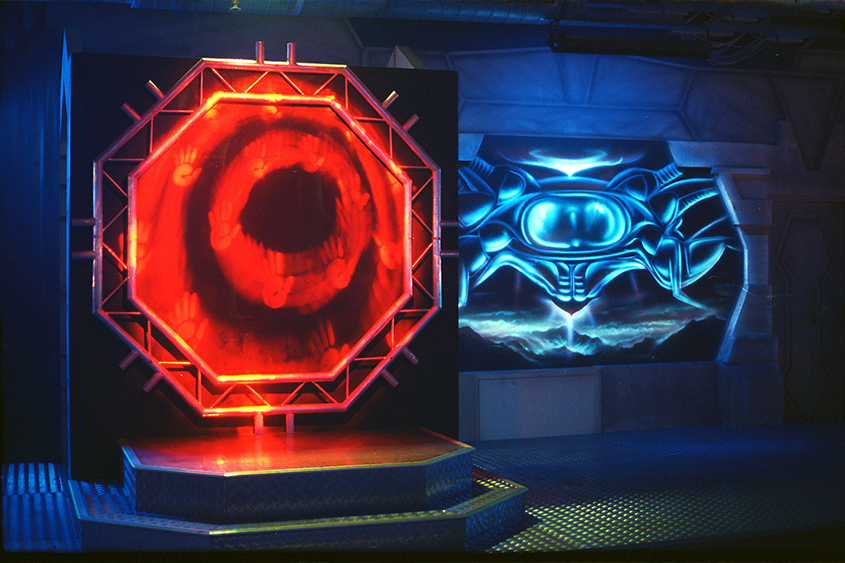
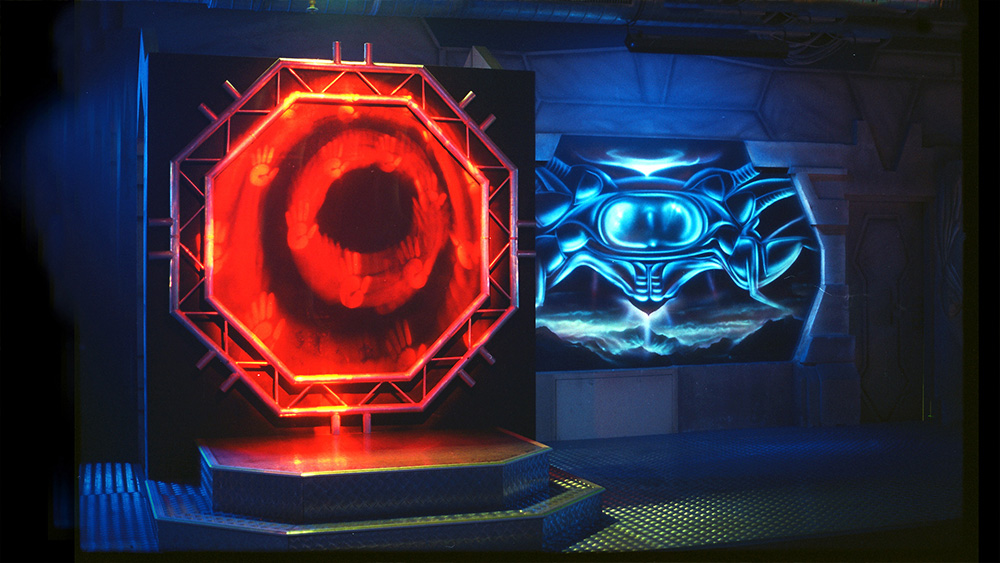
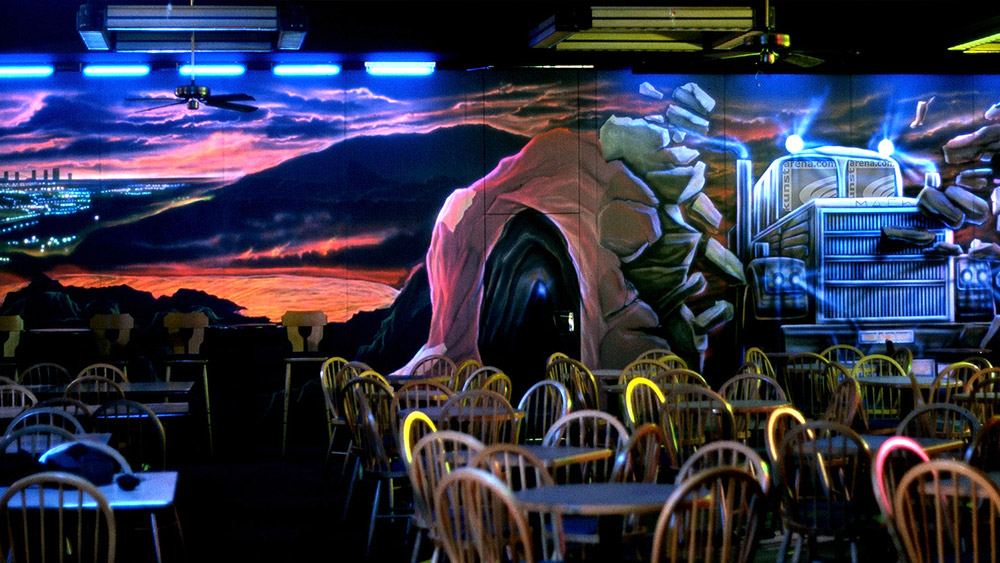

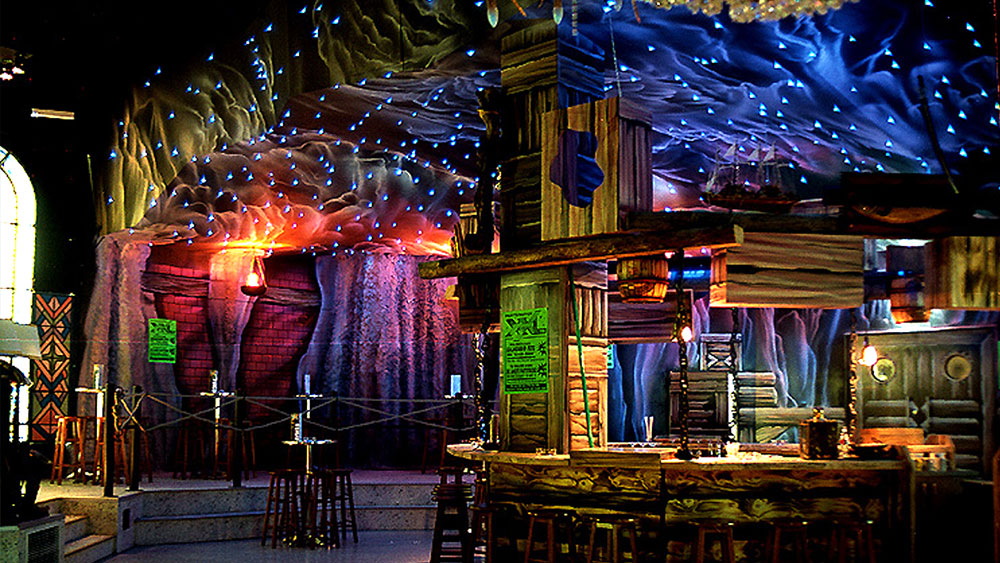

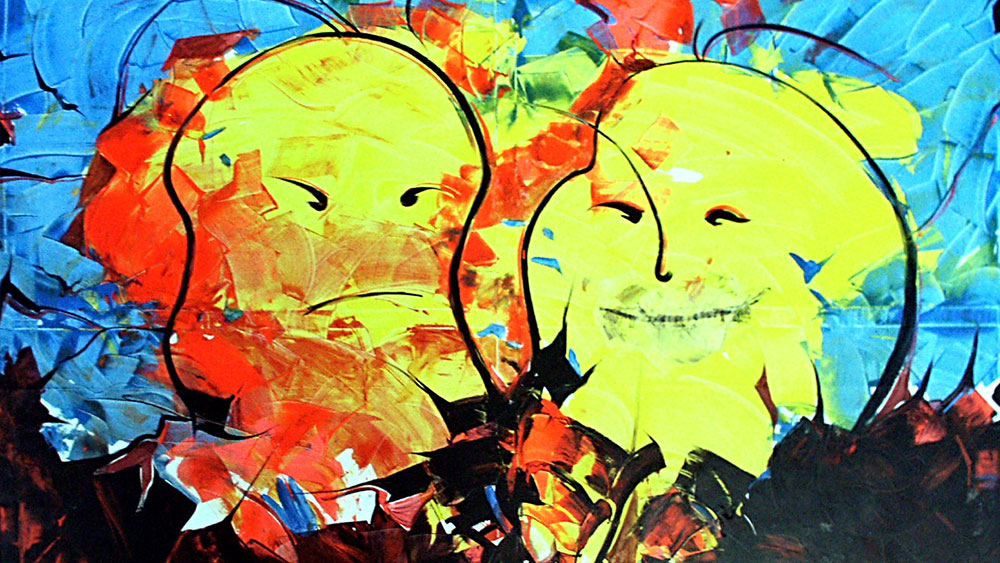
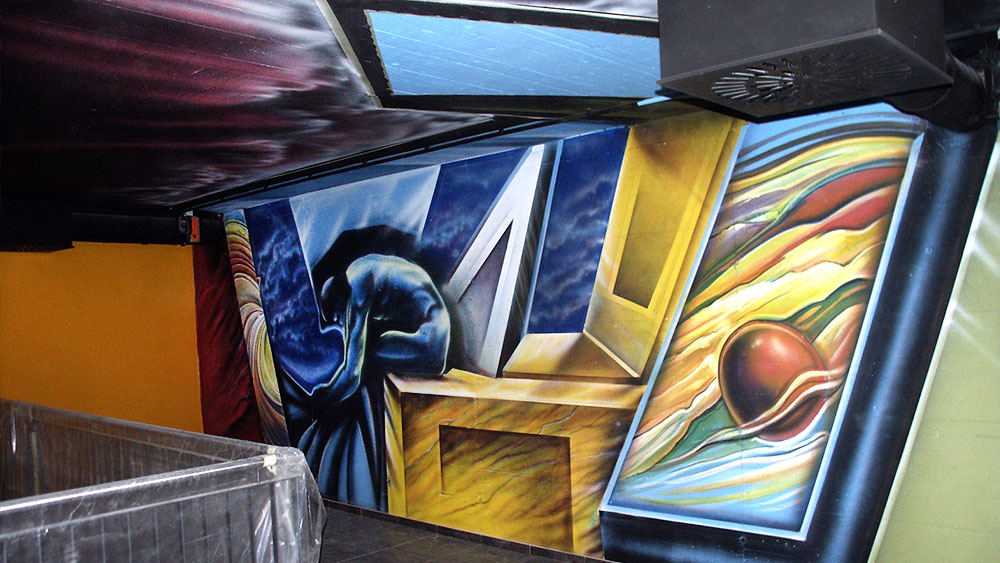
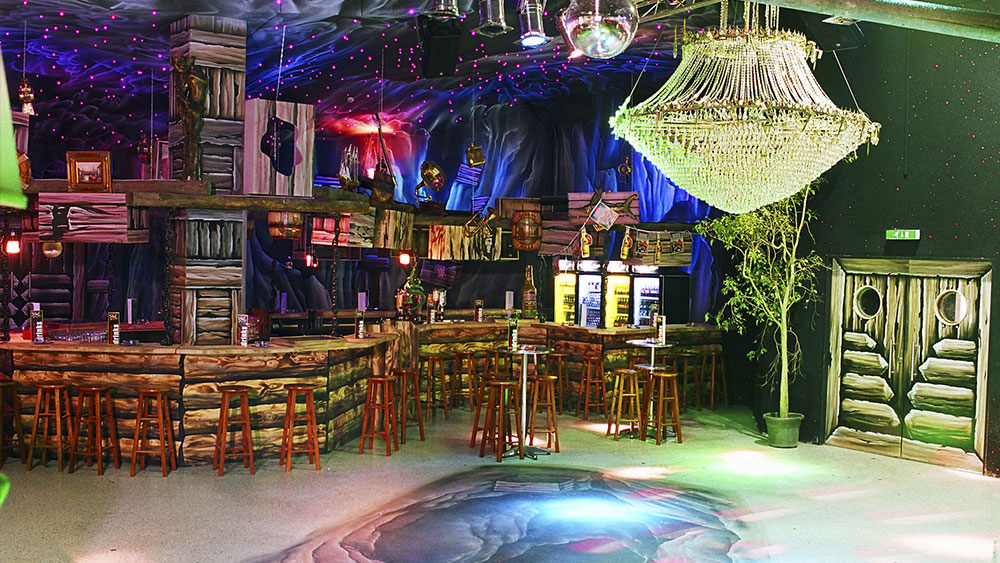

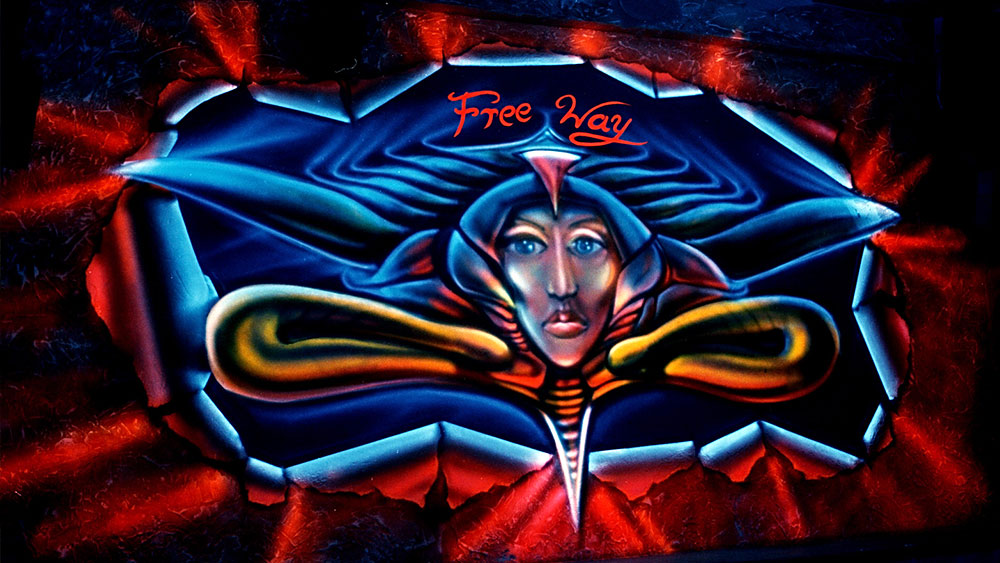

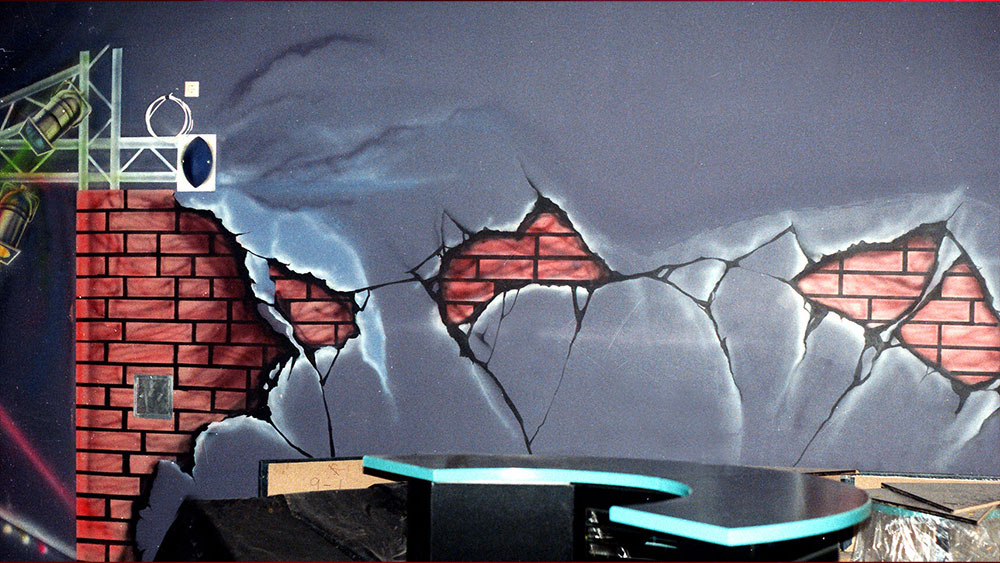

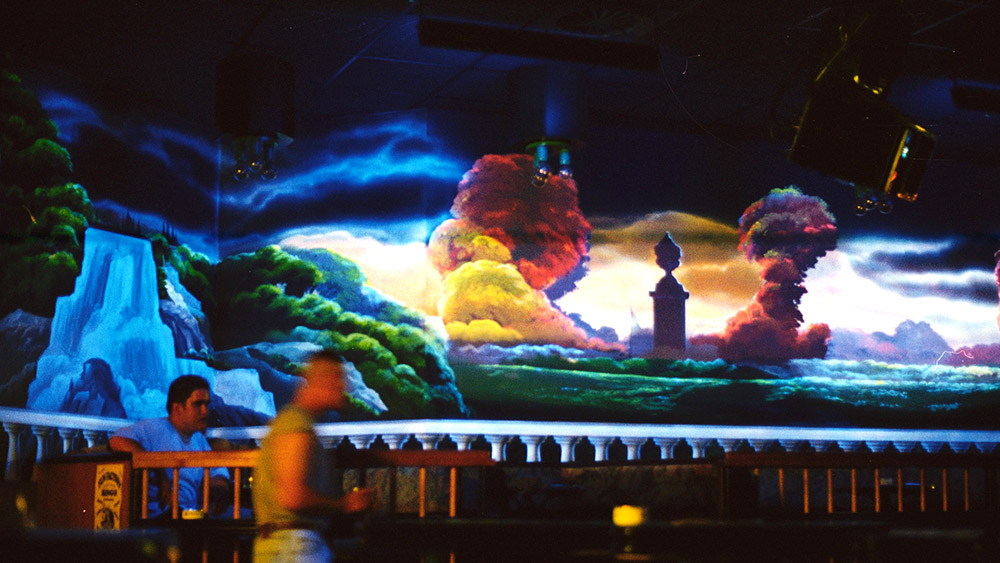
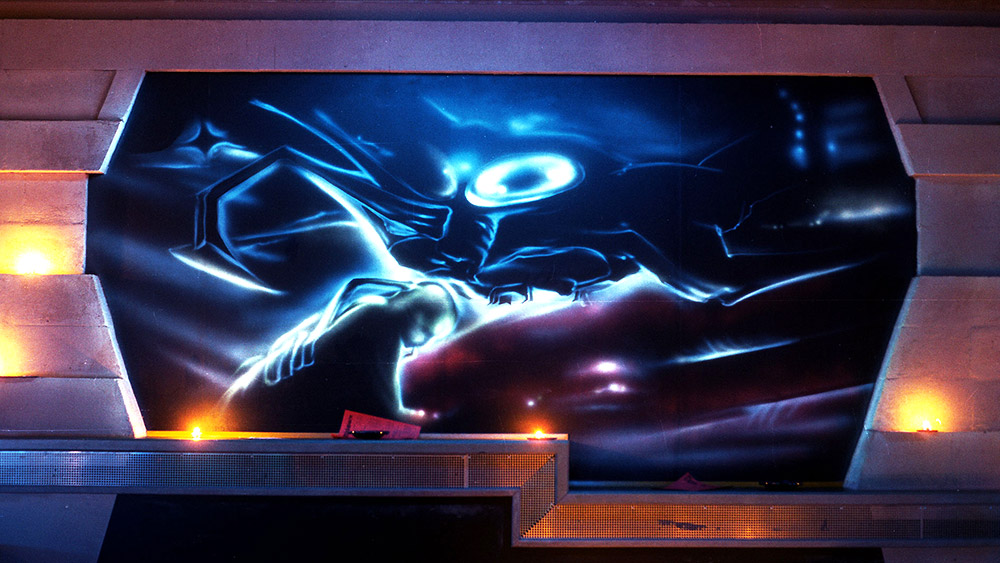


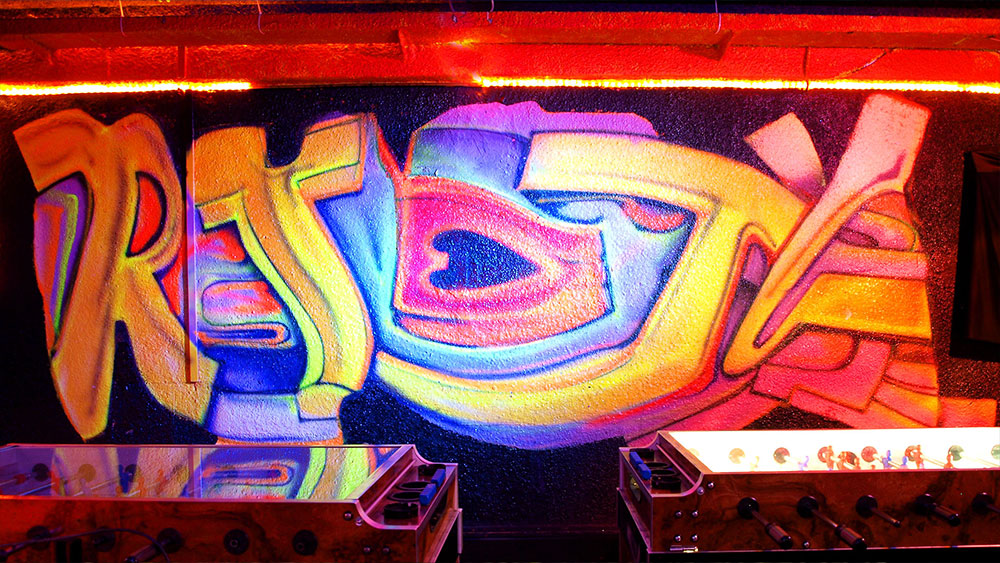
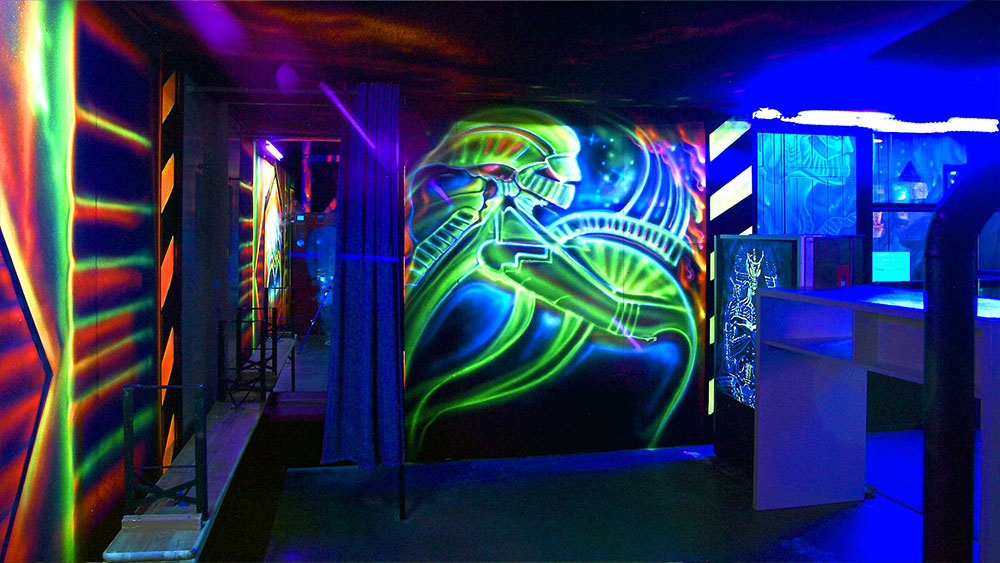
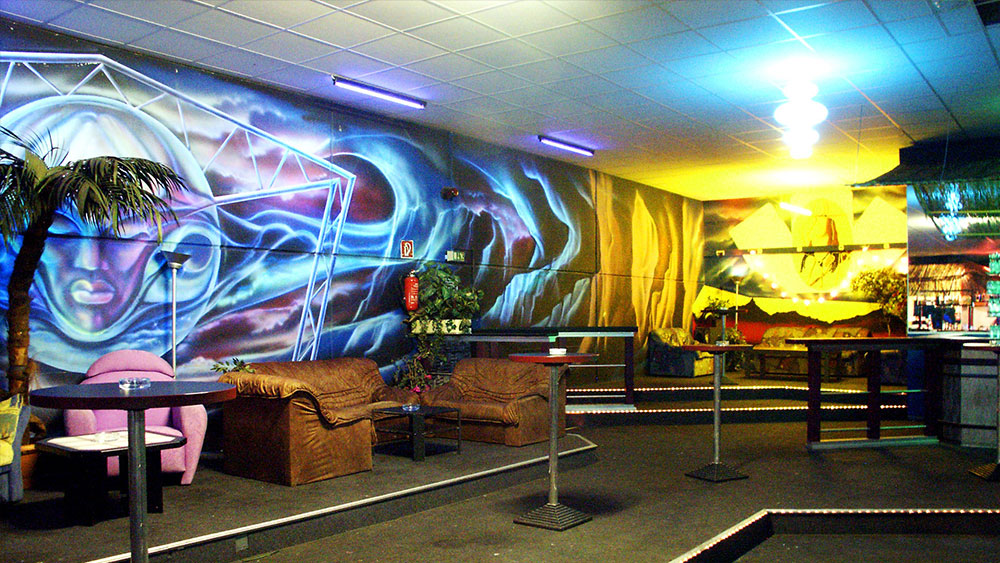
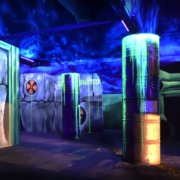
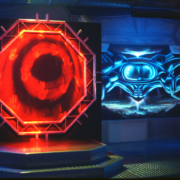
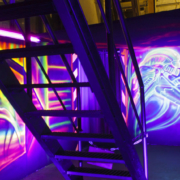

Leave a Reply
Want to join the discussion?Feel free to contribute!